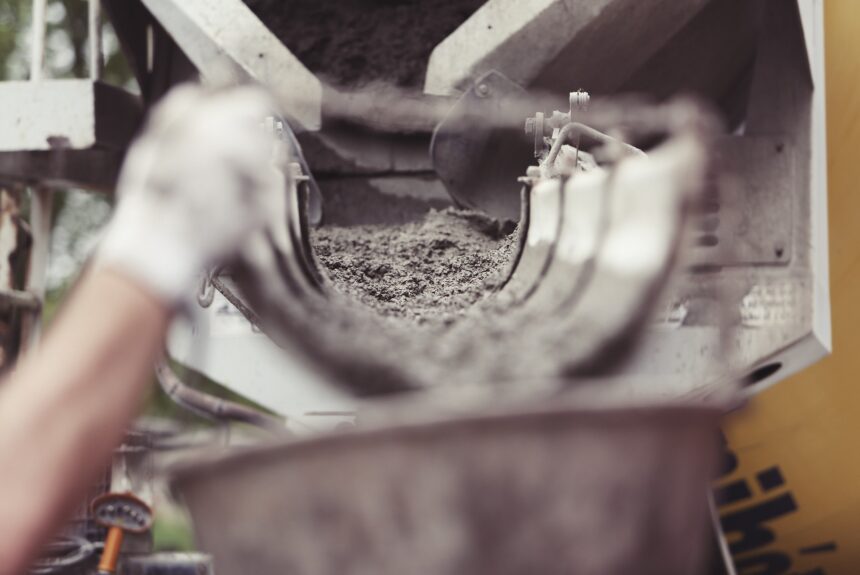Concrete is a critical component to many aspects of our daily life. The construction industry churns out more than 4 billion tons of cement each year— the main binding agent in concrete— to build homes, motorways, sidewalks, sewerage systems, dams, bridges, and just about all other kinds of essential infrastructure. As more people are expected to migrate to cities in the future and demand for housing rises, demand for cement will only continue to grow. But this wonder material that has raised living standards across the globe and made modern life possible is also a significant source of worldwide emissions. Concrete accounts for an estimated eight percent of global carbon dioxide (CO2) emissions. It is the most ubiquitous substance on the planet second only to water, according to a 2019 UN Environment Program report.
>>>READ: Enginuity Power Systems: Clean Power with Natural Gas, Propane, and Hydrogen
Concrete is emissions intensive because there has been no commercial alternative to creating cement without going through the chemically necessary but energy-heavy step of breaking down limestone. However, one Bay area startup is changing the game when it comes to fixing concrete’s massive carbon footprint.
Heirloom Carbon Technologies, a California startup headquartered in San Francisco, is teaming up with concrete solutions firm CarbonCure to pull carbon dioxide from the atmosphere and permanently secure it in concrete. The novel process leverages the natural power of limestone to develop the worlcd’s most cost-effective and scalable direct air capture (DAC) technology.
Concrete’s insidious carbon footprint can be traced to its dirty production process. Concrete is created by mixing inexpensive “aggregates” (typically crushed stone like sand and gravel) with a fluid paste made of water and cement. inexpensive “aggregates” (typically crushed stone like sand and gravel) with a fluid paste made of water and cement. Over time, the paste hardens and binds the aggregates into a durable rock-like substance known as concrete.
The cement-making process is where the bulk of CO2 is released. Manufacturing cement involves burning significant amounts of energy to power rotating kilns to temperatures above 1500 degrees Celsius to yield cement clinker–the key constituent of cement–from calcium carbonate (limestone) and clay. The chemical decomposition of limestone (calcination), when heated in the rotary kiln, is specifically what emits the most carbon dioxide. In fact, calcination accounts for approximately half of all emissions in cement production, according to research from the Columbia Climate School.
Heirloom’s process works by manipulating limestone’s natural ability to draw carbon from the air and accelerating it a thousand-fold: First, crushed limestone is heated to isolate the naturally-containing CO2 present in the rock. Once the CO2 is removed, the limestone mineral-powder is spread onto vertically-stacked trays and “treated” to optimize its ability to absorb carbon. The cycle is repeated again until the CO2-deprived limestone essentially acts like a sponge, continually soaking up to half its weight in CO2 from its surroundings.
>>>READ: Geothermal Energy Report Predicts Future Drilling Boom in Texas
“Limestone has this natural ability to pull carbon out of the atmosphere. The problem is it’s just slow. So what we do here is just give it more superpowers to make it pull carbon much, much, much faster than it otherwise would,” Heirloom CEO Shashank Samala said, according to Reuters.
Heirloom’s advanced technology cuts that time from years to just days, according to its website.
Canadian concrete technology company CarbonCure has worked with Heirloom to handle the storage side of the business. CarbonCure combines the captured carbon with concrete ingredients to create a high-strength, CO2-enriched concrete ideal for use in building projects. The carbon-enhanced concrete is competitive with traditional concrete derived from cement, but CarbonCure concrete is made using less cement, the most notorious emitter during concrete production.
On February 3, Heirloom announced that CO2 captured via DAC had been permanently stored in concrete for the first time at its operational facility in Brisbane, California. Heirloom aims to safely sequester one million tons of CO2 by 2035. So far Heirloom and CarbonCure have partnered only once, but the two companies remain in conversations about collaboration in the future.
“The thing about concrete is there are no substitutes,” CarbonCure CEO Rob Niven said, hailing DAC technologies as some of the most promising tools against climate change.
Niven is right. DAC, although costly right now, is considered one of the most effective, durable, and verifiable carbon removal technologies, and the U.S. government recently signaled its unequivocal support through the Department of Energy’s $3.5 billion DAC hub program and the Inflation Reduction Act.
However, reaching a carbon-negative future will first and foremost require leaps in energy innovation–a task best secured through the private sector and epitomized by companies like Heirloom.
Nathalie Voit is a freelance content creator and a graduate of the University of Florida. She is an alumni of The Heritage Foundation’s Young Leaders Program.
The views and opinions expressed are those of the author’s and do not necessarily reflect the official policy or position of C3.
